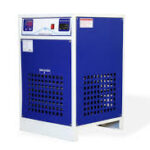Air Cooled Chillers
Air-cooled chillers function as refrigeration systems that use fan-driven air to expel heat from the coolant or refrigerant. Unlike water-cooled chillers, they eliminate the need for cooling towers.
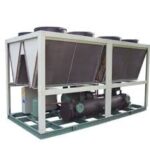
Water Cooled Chillers
Water-cooled chillers operate by transferring heat from the refrigerant to a water source, typically through a cooling tower. They are widely used in commercial buildings and industrial facilities requiring consistent cooling.
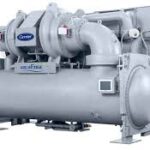
Screw Chillers
Screw chillers use screw compressors to provide efficient cooling in industrial and HVAC applications. They handle large cooling loads with consistent performance these chillers are ideal
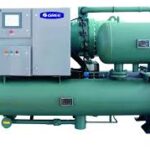
Variable Speed Chillers
Variable speed chillers use compressors with VFDs, ensuring dynamic speed adjustments for enhanced efficiency and energy savings based on cooling requirements.
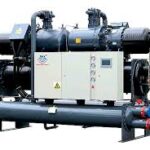
Oil Chiller
Oil chillers are cooling systems designed to stabilize lubricating oil temperature. They ensure efficient machine performance and prevent overheating. These chillers are essential for precision and durability.
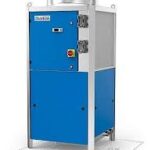
Hydraulic Oil Chiller
Hydraulic oil chillers are designed to cool hydraulic oil in heavy-duty machinery. They prevent temperature fluctuations that can impact performance. Proper cooling extends equipment lifespan.

Online Chiller
Online chillers offer continuous cooling for industrial and commercial setups. They come with remote monitoring features via internet access. This allows for efficient temperature control
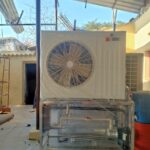
Glycol Chiller
Glycol chillers are cooling systems that circulate a glycol-water solution to absorb heat. They are ideal for applications requiring low and stable temperatures, such as breweries and wineries.
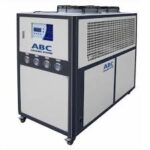
Spindle Chiller
Spindle chillers maintain optimal temperatures in high-speed rotating spindles. They prevent overheating in CNC and industrial machines. This reduces wear and enhances operational stability.
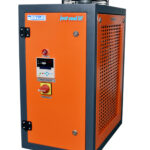
Refrigerated Air Dryer
Refrigerated air dryers are used in compressed air systems to eliminate excess moisture. They work by cooling air to condense water vapor. This prevents rust, corrosion, and contamination.
